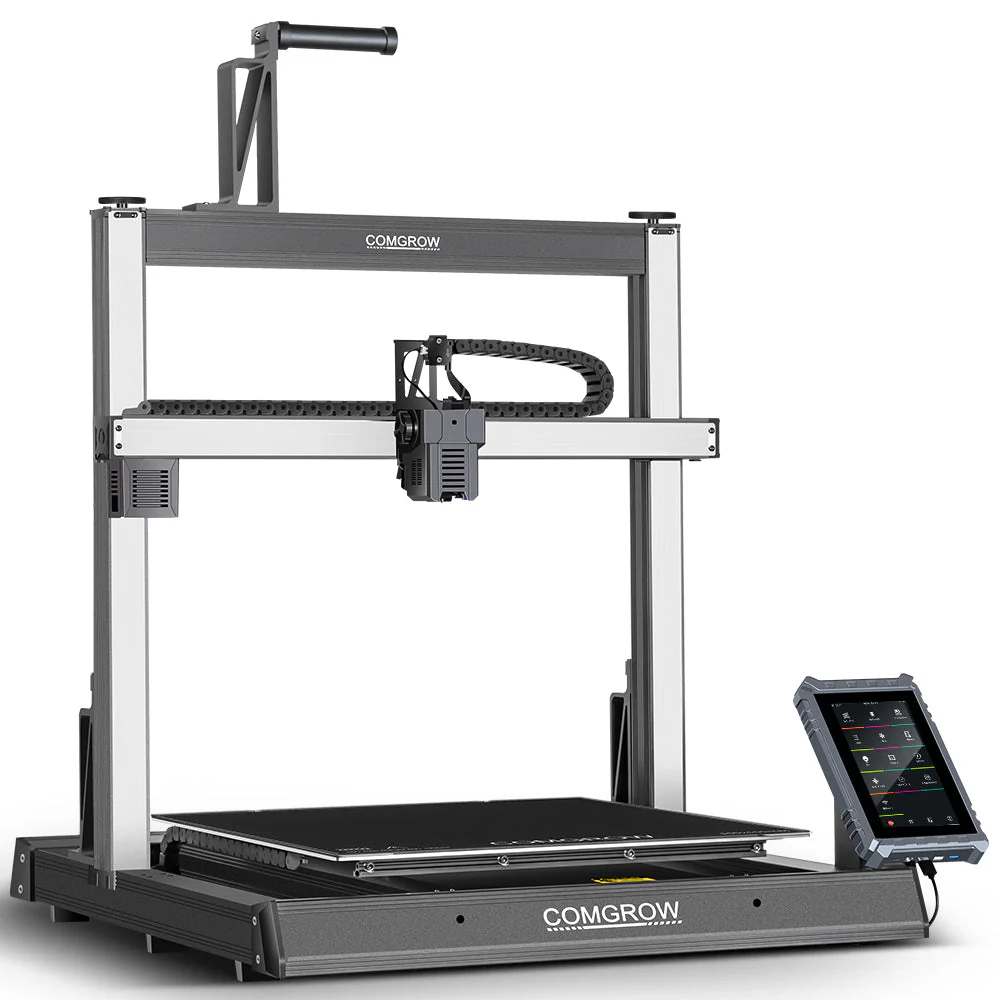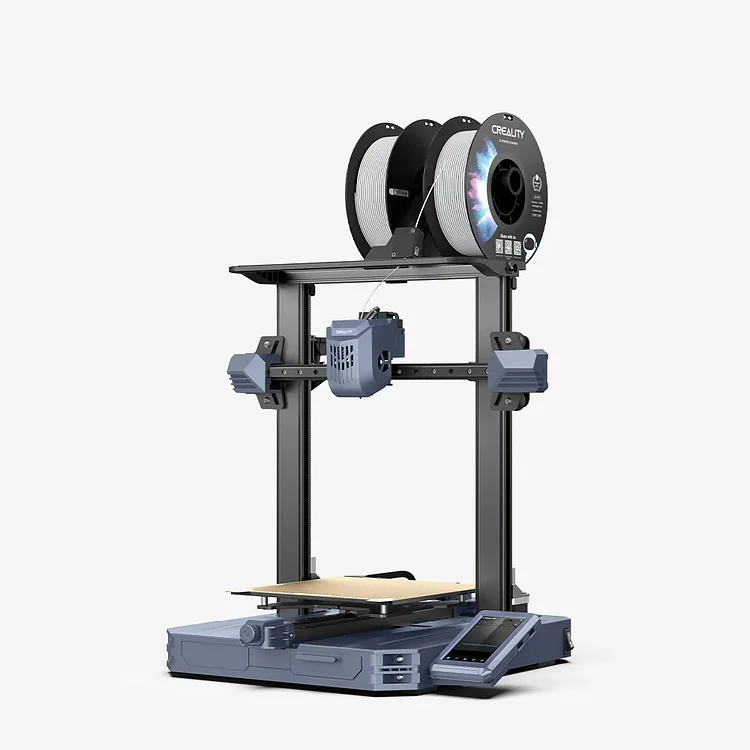Compare Comgrow T500 vs CR10 SE
Comparison between the best 3D printers
Choose the best 3D printer at the best price. The cheapest 3D printers are here.
Buy a 3D printer here with 3D Fila.
 |
 |
|
| Model | Comgrow T500 |
CR10 SE |
| Printing Material | Filament | Filament |
| Buy Filament for Sovol Comgrow T500 | Buy Filament forCreality CR10 SE | |
| Estimated price | $799,00 | $386,00 |
| Manufacturer | Sovol | Creality |
| Release Year | 2024 | 2023 |
| Print Volume [mm] | 500x500x500 | 220x220x265 |
| Printer Size [mm] | 817x810x962 | 490x470x625 |
| Weight [kg] | 39 | 6,9 |
| Power Loss Recovery | YES | NO |
| Enclosed printer | NO | NO |
| Bed Leveling | Automatic | |
| Filament End Sensor | YES | NO |
| Bed type | Heated | |
| Power supply system | Direct Drive | Direct Drive |
| Standard nozzle | 0,4 | 0,4 |
| Maximum Nozzle Temperature [°C] | 300 | 300 |
| Maximum Bed Temperature [°C] | 80 | 110 |
| Maximum printing speed [mm/s] | 500 | 600 |
| Filament holder | YES | YES |
| Camera for supervision | NO | NO |
| Recommended filaments | PLA, PETG, Fibra de Carbono, TPU | PLA, PETG, PET, TPU, PA Wood, ABS, ASA, PA, PLA-CF |
| Recommended slicers | Creality Print, Cura 5.0 ou superior, Prusa Slicer, Orca | Creality Print, Cura, Simplify3D, PrusaSlicer, Orca Slice |
| Maximum Resolution [mm] | 0,1 | 0,1 |
| Processor | ||
| Display | 7'' IPS touchscreen, 60Hz | |
| Power Supply | 500 W | |
| Connectivity | USB, Wifi | |
| Operating systems | Windows, Linux, Macbook | |
| Date of registration in the system | 2024-07-18 | 2024-07-02 |
| Release date | 2024 | 2023 |
| Extra features | The Sovol Comgrow T500 stands out for its large print volume of 500x500x500 mm, ideal for large-scale projects. It has a direct extruder with a gear ratio of 6.5:1, speeds of up to 200 mm/s, and high-performance motors. The 7" touchscreen with Klipper software makes navigation easy. The 49-point automatic leveling ensures a perfect first layer. It also has a full metal hotend at 300°C, linear rails on all axes, and WiFi connectivity. | The Creality CR10 SE stands out for its printing speed of up to 600 mm/s, easy and intuitive assembly, direct extruder with double gears, hotend with hardened steel nozzle and ceramic heater, automatic leveling with CR-Touch and pressure sensor, and use of Creality OS firmware based on Klipper, with automatic input shaping calibration. It also includes Wi-Fi connectivity, a filament out-of-stock sensor and a robust structure with linear rails on the X and Y axes. |
| Support for multiple colors and materials (AMS and CFS) | NO | NO |
Notes * |
||
| Cost-benefit | 7 / 10 | 7 / 10 |
| Hardware | 3.6 / 10 | 2.4 / 10 |
| Tela | . | . |
| Print volume | 5 / 10 | 3 / 10 |
| Performance | 4 / 10 | 5 / 10 |
Conclusion |
| In comparing the Sovol Comgrow T500 and the Creality CR10 SE, several important factors emerge for potential buyers to consider. The Sovol Comgrow T500, while significantly more expensive, offers a much larger print volume of 500x500x500 mm, making it ideal for ambitious projects requiring substantial size. Its automatic bed leveling, a power loss recovery feature, and a robust touchscreen interface provide a user-friendly experience, particularly for those who prioritize ease of use in their printing process. Furthermore, the superb performance specifications, including high-speed capabilities and support for a wide range of materials, underline its value for serious hobbyists and professionals. On the other hand, the Creality CR10 SE presents a more budget-friendly option, excelling in print speed at 600 mm/s. It is designed for easy assembly and features essential capabilities such as automatic leveling and a filament out-of-stock sensor, appealing to beginners or those who need a reliable, straightforward machine without extensive learning curves. Although its print volume is smaller, it still supports a diverse range of filaments, catering well to general 3D printing needs. Overall, the choice between these two printers hinges on the user's specific requirements. Those needing larger build sizes and advanced features might find the investment in the Sovol Comgrow T500 worthwhile, as it offers more advanced functionality and greater versatility. Conversely, the Creality CR10 SE serves as an excellent entry-level or mid-range option, delivering solid performance for users who prioritize affordability and simplicity without compromising quality. Ultimately, both machines score similarly in terms of cost-benefit ratio, illustrating that users can find value in either option depending on their priorities and budget. |

